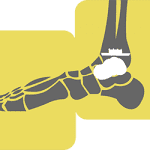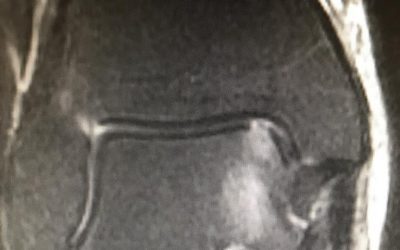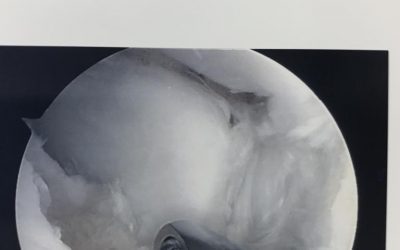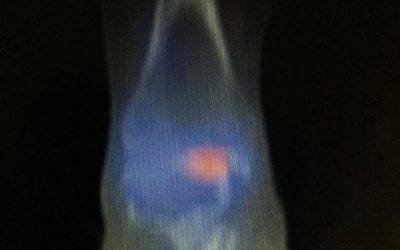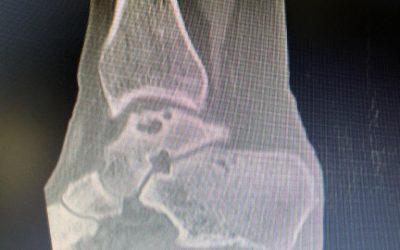What is Osteochondral Defect of the Talus (OCD)?
What is an OCD?
An osteochondral defect of the talus (OCD) is also known as Osteochondritis dissecans, Transchondral fracture, Talar Dome Lesions (TDL), osteochondral lesions of the talus (OLT). These are associated most commonly with the talus but can be compounded by developing in the tibia. We often term these ‘pot-holes’ in the cartilage.

How do they develop?
Most lesions can be attributed to a traumatic event, where 5 – 9% of ankle sprains have associated OLT and 28 – 73% of ankle fractures have an associated OLT. Osteochondral lesions are believed to be a combination of trauma and ischemia over time. Chondral fragments become devoid of blood supply and slowly separate from the underlying subchondral bone. Other atraumatic etiologies include ischemia, subsequent necrosis, and rarely genetics.

What are the symptoms of an OCD?
Patients usually develop pain deep inside the ankle. Most patients complain of a combination of swelling, pain with weightbearing or walking, and often times instability. As most of the lesions are associated with a complex ankle sprain, the ankle can feel loose or weak. The pain will often come and go and feel like a deep, achy type of pain.
How are OCDs diagnosed?
The first step is seeing a foot and ankle specialist, like Dr. Cottom and Dr. McAlister, whom knows the complexity of these problems. The next is a thorough physical examination and history of the patients’ ankle pain. Weightbearing radiographs are taken to analyze the structure of the lower extremity. Often times advanced imaging is performed to look at the degree of swelling inside the bone and how deep the OCD can be. This will give the physician a roadmap of what previous surgeries have been performed as well as a plan for any intervention in the future. MRIs and CT scans or even a SPECT-CT scans can help identify the ligaments around the ankle but also the tendons and remaining cartilage on the tibia and talus.
MRI of the ankle gives our team information regarding the size and severity of the lesions.
What are the treatment options for an Osteochondral Defect?
Typically, after we have determined the appropriate size and location of the lesion, focused biological supplementation, functional rehabilitation of any muscular deficits and bracing is enforced first. Our team supports regenerative options as a first line of treatment for these difficult-to-treat lesions such as, platelet rich plasma injections and amniotic flowable injections in order to support the underlying bone. Advanced bracing options and early muscular balancing is also implemented as early as possible. These options can sometimes avoid surgical intervention for a period of time.
When these conservative options fail, we are typically discussing minimally invasive approaches to OCD repair, depending on the size and location of the lesion, arthroscopic surgery is discussed first. This is all in an effort to reduce the size and depth of the lesion as well as the swelling around the lesion. The current literature supports chondral abrasion and filling the defect as necessary with allograft (cadaver) cartilage. When this fails or for a larger defect, our team has innovative techniques for bulk cadaver cartilage repair.
Please read more about the advanced options for Talar OCD repair on our surgical page
Locations
Patients

Dr. James Cottom
Lorem ipsum dolor sit amet, consectetur adipiscing elit, sed do eiusmod tempor incididunt ut labore et dolore magna aliqua. Ut enim ad minim veniam, quis nostrud exercitation ullamco laboris nisi ut aliquip ex ea commodo consequat. Duis aute irure dolor in reprehenderit in voluptate velit esse cillum dolore eu fugiat nulla pariatur. Excepteur sint occaecat cupidatat non proident, sunt in culpa qui officia deserunt mollit anim id est laborum.

Dr. Jeff McAlister
Lorem ipsum dolor sit amet, consectetur adipiscing elit, sed do eiusmod tempor incididunt ut labore et dolore magna aliqua. Ut enim ad minim veniam, quis nostrud exercitation ullamco laboris nisi ut aliquip ex ea commodo consequat. Duis aute irure dolor in reprehenderit in voluptate velit esse cillum dolore eu fugiat nulla pariatur. Excepteur sint occaecat cupidatat non proident, sunt in culpa qui officia deserunt mollit anim id est laborum.
Join the Email List
We want to resource you with the best options for good ankle repair and rehab
Contact Us
If you have any questions about our services or how we can help, please contact us so we can start working with you on the road to restoring your ankle to it's full potential.

